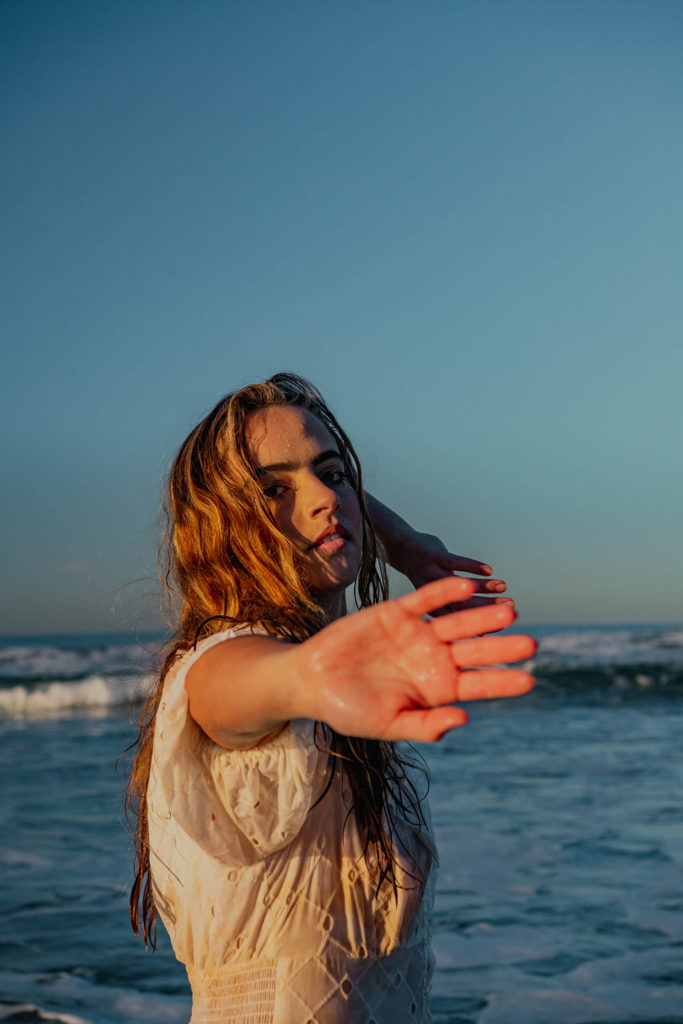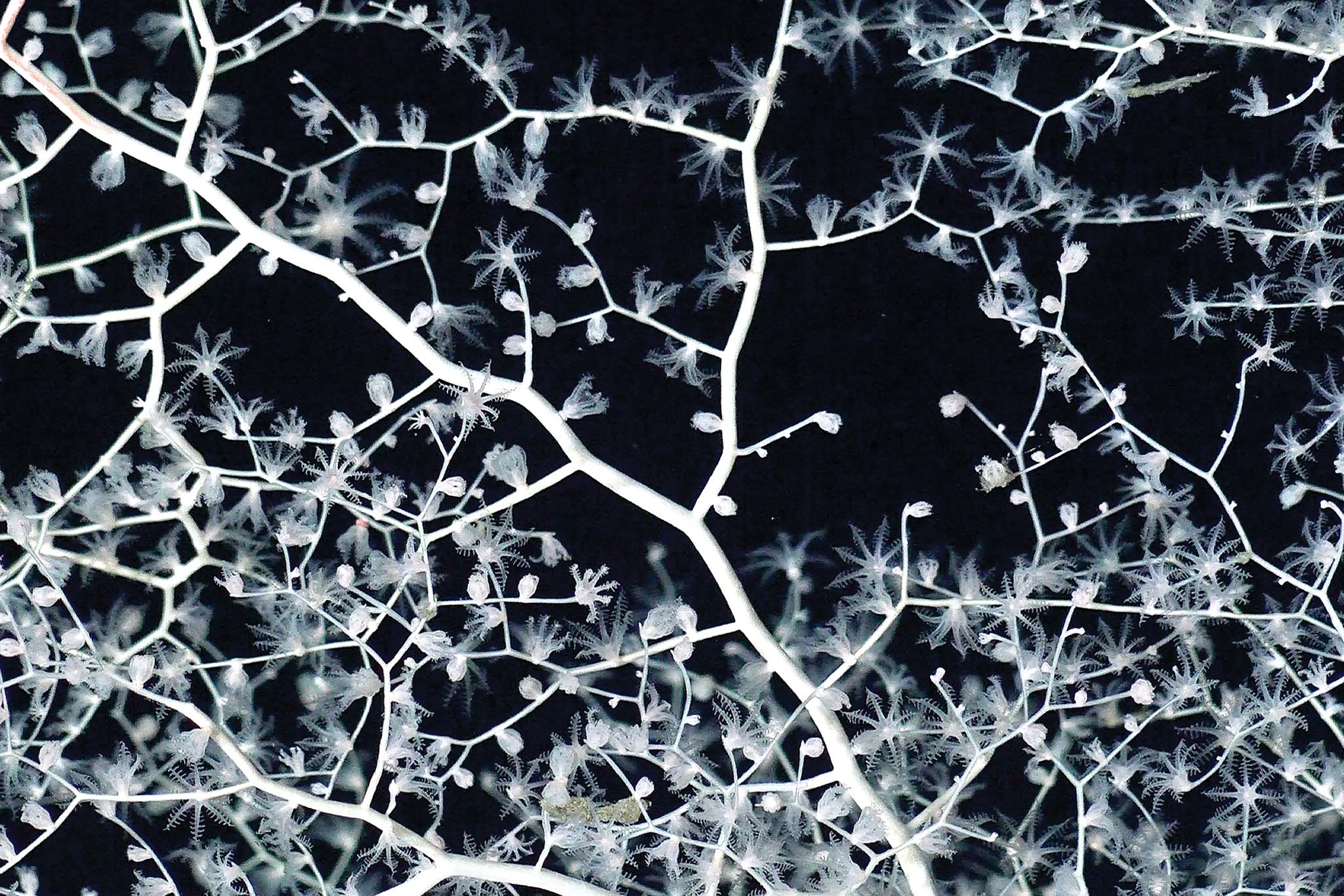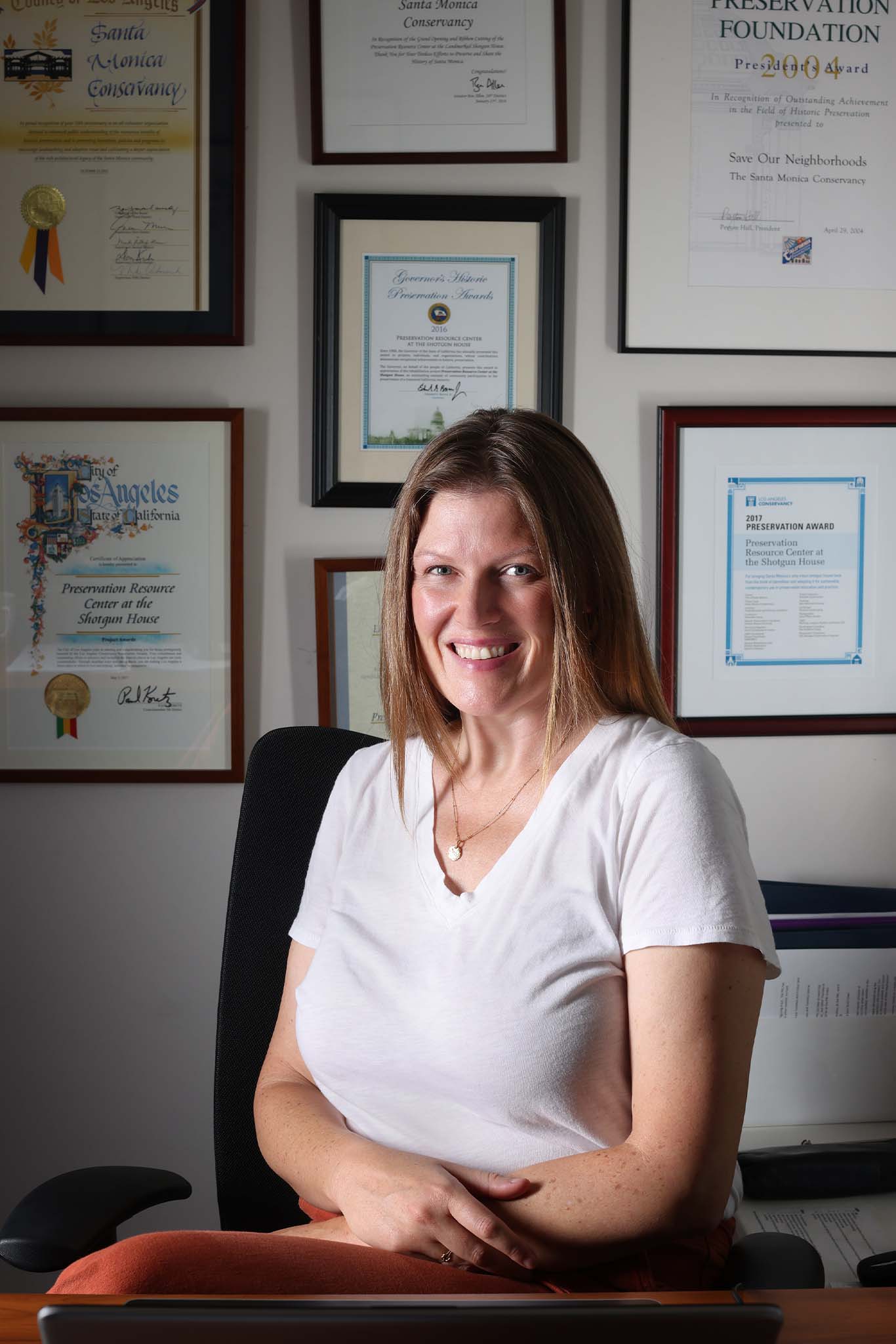Text by Christine Hitt
Images by Josh S. Rose for the L.A. Dance Project
On a purple carpet in a Los Angeles parking lot, seven dancers wore three-dimensional floral masks over their faces. They moved expressively to music with ominous tones, letting the audience interpret what each was trying to convey—loss, fear, a desire to connect, an attempt to remember.
Called “Solo At Dusk,” the piece the L.A. Dance Project was performing was created by award-winning choreographer Bobbi Jene Smith with Or Schraiber. It was part of a series by the company called “Drive-In Dances,” for which audiences drove into a parking lot and watched from their cars, a socially distanced yet emotional experience in the uncertain moments of the COVID-19 pandemic. Inspired first by the dancers themselves, Smith also drew from the pandemic. “It’s a fossil of the moment,” she says. “The distance, uncertainty, fear, isolation and the search to be understood.” (“Solo At Dusk” was performed again in May and June 2021.)
“It was so exciting to create during this time, to be with the artists and team of LADP and to have the chance to find some order and beauty amongst the fear and isolation,” Smith says. An accomplished dancer from Iowa, she studied at Julliard for three years before moving at the age of 21 to Israel, where she performed in the Batsheva Dance Company for 10 years before returning to the United States. “The dancers and the entire team of LADP were collaborators in the process of ‘Solo At Dusk’ and were huge inspirations.”
LADP was founded in 2012 by Benjamin Millepied, the company’s artistic director. Millepied, a choreographer and filmmaker, was born in France, and he was a principal dancer with New York City Ballet. He choreographed the 2010 film Black Swan, shot in New York, in which he also starred. But he chose L.A. to be home for his dance company.

“L.A. is where our work is created and where it is first presented,” Millepied said when he started the company. “LADP is a live art experience, it is now, more than ever an antidote to our society.”
“L.A. is this kind of chaotic, messy, smoggy, truly isolating place to be, but then it also has this insane wealth of talent,” says Lucinda Lent, executive director of LADP. “There’s an amazing food scene, the art galleries are exploding, it’s a massive contradiction. I think that’s why Benjamin sees it as being so interesting culturally and why you’re able to really be creatively free in Los Angeles.”
Comprised of 10 fulltime dancers, LADP has since taken the stage in approximately 100 cities around the world. Their performances range from new creations by Millepied to commissions from emerging choreographers to collaborations with artists. In 2019, LADP held its inaugural L.A. Dances festival, which included eight commissioned pieces and two new works by Millepied. In 2022, they are premiering Millepied’s modern take on Romeo and Juliet in Paris.
According to Lent, to be one of the dancers to take on these performances, “you have to have a huge range, ballet, contemporary, all of it.” As an example, she highlights David Adrian Freeland, Jr. “He’s like this beautifully classically trained ballet dancer, but he also does contemporary dance, so when you see that, it’s really beautiful and amazing.”
Freeland grew up in Florida and received his early dance training at LaVilla School of the Arts in Jacksonville before attending the Conservatory of Dance at SUNY Purchase College in New York. A moving artist who likes a mix of all different styles, from ballet and modern to hip-hop and African, Freeland joined LADP in 2016.
“[Millepied’s] always advocating for us to be ourselves when we dance, because that’s why he hired us,” Freeland says. “He didn’t hire us because we have all of these abilities. He hired us because of who we are as dancers and people. So that’s been my greatest part of working with him.”
In 2020, Freeland choreographed “It Could’ve Been Me… It Could Be Me” during the uprisings against police brutality, and he performed it last April as a partnership between LADP and Hauser & Wirth Los Angeles. A solo performance mixing ballet and modern dance, it was a powerful and emotional piece in response to the killings of unarmed Black Americans Kenneth Chamberlain, Trayvon Martin, Amadou Diallo, Michael Brown, Oscar Grant III, John Crawford, and Eric Garner.
Cinematographer and regular contributor Trevor Tweeten filmed Freeland as he moved through the gallery’s indoor and outdoor spaces and performed to the words and music from “Seven Last Words of the Unarmed,” a composition by Joel Thompson.
“I definitely didn’t want it to be about me, I wanted it to be about each of these guys who said their seven last words on that film,” Freeland says. When dancing for film, Freeland, or any choreographer, must think about the camera. In this piece, he let the camera represent the police. He also looked at the camera as being the innocent bystander who had a camera phone recording the scene.

Collaboration with local creatives is a strength of the L.A. Dance Project. From visual artists to photographers to dancers and choreographers, LADP showcases local talent both on stage and through its new platform, which is available as an app and online. The platform, which launched in 2020, has on-demand and live-streamed fitness and dance classes taught by L.A. Dance Project dancers and guest instructors, archived and live-streamed performances, and even conversations with artists.
“I think LADP is adding to the soul of the city,” Smith says. “It’s a company of people who want to push the artform forward and to put it in the hands of people who might never encounter dance. I can’t wait to see the echoes of everything they are creating.”











